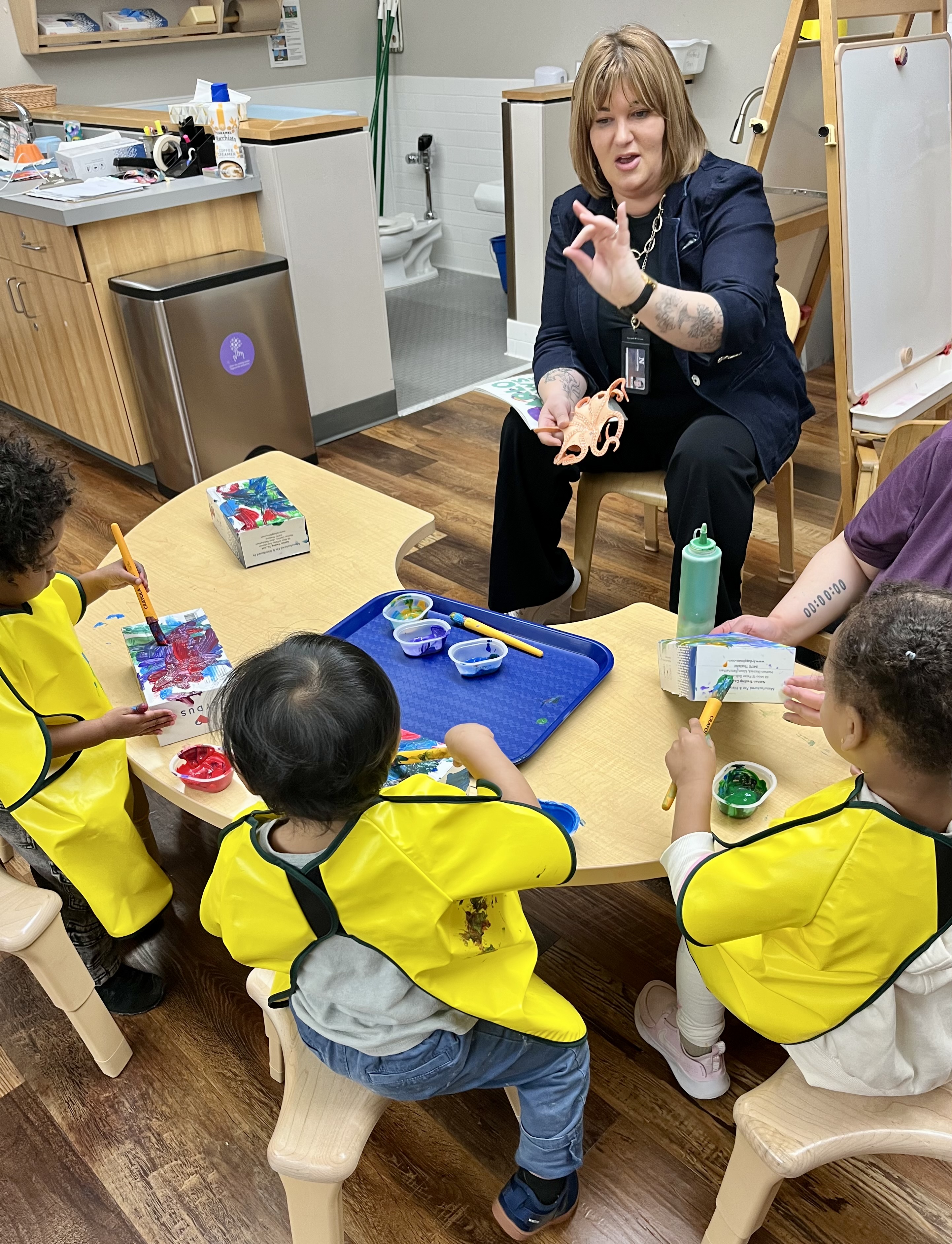When Tonia Breech, director of education for Northampton Community College (NCC), traveled to Denmark in 2024 for an up-close look at the country’s early childhood education system, she felt disheartened at first. That feeling eventually turned to ones of validation and empowerment.
Breech, who has worked in early childhood education for more than two decades, has seen the many ways that this field has evolved (and devolved). However, her core principle remained steadfast -- Young children should be involved in their education, and they should be engaged with the outdoors as much as possible.

Breech reading to children at Hannig Children's Center during Week of the Young Child
Her trip to Denmark followed the schools and teachers—pedagogues as the Danes call them—featured in A.J. Stilling’s Nature Play, an award-winning documentary. Breech spent time at a forest school for kindergarteners. She watched children climb trees, forage for safe-to-eat plants, whittle, and cook over fires.
“It was incredibly magical and at the same time, really disappointing,” Breech says. “I wanted to bring so many concepts back, and it took a little while to sit with this and not be disheartened.”
In true educator spirit, Breech realized even if she couldn’t replicate the Danish early childhood education system in Pennsylvania, she could integrate its meaningful pieces. In April, Breech presented her findings and her bite-sized approach, as she calls it, to the First Up annual conference in Philadelphia.
The conference brings together educators in the Philadelphia area, including early childhood learning program owners and developers, teachers, staff and faculty in higher education, mentors, and support teams. Breech was honored to accept the invitation to share her Danish experience with the conference attendees.
“How can we look at increasing outdoor time for students?” Breech asks. Although Danish preschool children might find themselves outside all day, every day, it’s not an all-or-nothing approach. Breech encourages educators to find extra time for children to go outside or bring nature inside.
“We can incorporate natural materials into the classroom,” she says. This can be helpful for urban educators especially, like her cohorts in Philadelphia, who might not have a green space readily available. “Bring in rocks, sticks, sod,” she says. “Those simple components will still get children connected to nature.”
Breech talks about giving young children the autonomy to choose what they want to play, with child-led play.
“We really need to make sure we’re listening to what the children need and adapting the curriculum accordingly,” she says. This approach, Breech says, wasn’t surprising but reaffirming to her as an educator; it’s how she has developed her own curriculum over the years.
This play, she says, can also go deeper than people might realize. For example, Danish educators follow the United Nations sustainable development goals, encouraging children-who-will-one-day-be-adults to create a better society for everyone. Breech saw this philosophy in practice with a model town the children built and essentially governed.
“You can go much deeper and attach large concepts to [that play],” she says. “We can give children more autonomy, more agency, and upskill them as they enter elementary school.” And, eventually, adult life.
The last key takeaway Breech shared with the First Up conference-goers is hygge, pronounced hyoo-guh. The Danish word basically means creating something safe and comfortable, Breech explains. In the classroom, educators can do this with their furnishings, types of fabrics, lighting, and colors.
This creates a space, Breech says, that tells children, “Take that space, and take a moment. Relax. This is incredibly important for the self-regulation we are teaching them.”
Breech saw herself in the First Up attendees: They wanted to replicate the Danish experience but felt at a loss for how to do it. Breech recalls some saying, “I want to do this, but I don’t know how to make this work in the Pennsylvania systems.”
“There was a huge agreement that this is the kind of education we want to provide to children, but we don’t know how to implement it,” Breech says.
As motivated teachers do, they workshopped it. Breech encouraged educators to start small. For example, she advised them to audit their classrooms—an actionable step—to determine how to introduce hygge. Can they swap out harsh lighting with softer options? Can they add pillows to a play area for a calming space?
“A sense of relief came over the crowd,” Breech says. An action’s an action, no matter how small.